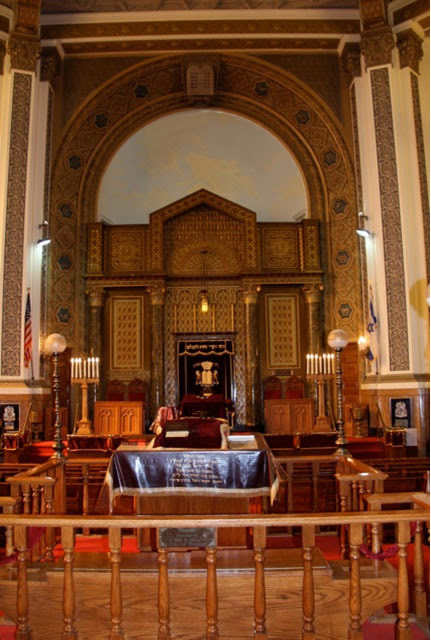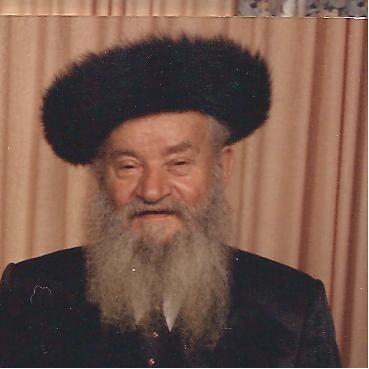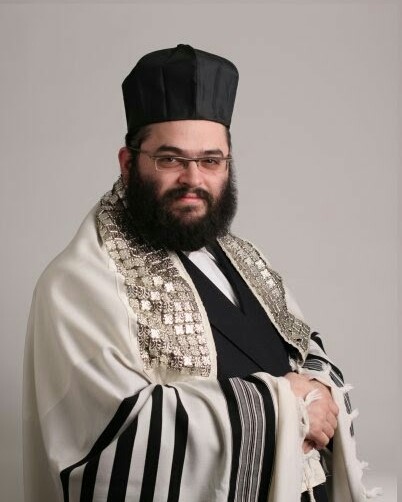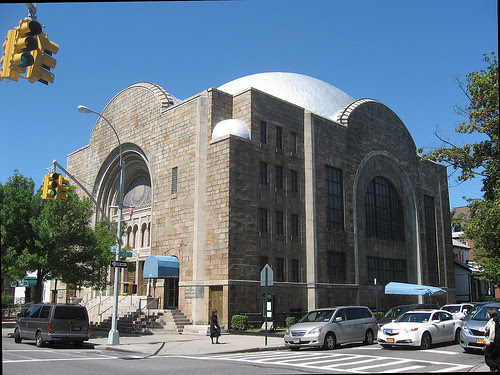
The Incredible Talent of Chazzan Benzion Miller and Sons
Chaya Sarah Stark
When I was a little girl, I davened in a shtiebel in Boro Park called Serdahely. During the Yamim Nora’im, I was mesmerized by the special niggunim sung at the shul during the holy tefillos. Although I did not hear them at the various other shuls I frequented during the years that passed, the tunes would reverberate in my mind each year during the month of Elul.
Recently, while davening at my shul here in Flatbush, I was responding to Kesser in Mussaf when the chazzan started singing a familiar Hu Elokeinu, Hu Avinu. I was suddenly transformed once again into a little girl listening to the chazzan. I was flooded with memories, and I even shed some tears. After davening, I approached the baal tefillah and asked him where he learned that particular niggun. His response: “I come from Serdahely, and that’s how we sang it at home. “ My Mussaf on that Shabbos had more kavanah and depth than I’d been able to muster in a long time.
As the Yamim Nora’im approach, our minds turn to teshuvah, tefillah and tzedakah. We fill the envelopes that arrive in the mail with checks, commit ourselves to higher standards of behavior and buy seats in our respective shuls. It is during this time of year that the tunes sung to the timely tefillos reverberate in our heads as we prepare to beseech Hashem for a year filled with good mazel.
How much of an impact does a chazzan, in his interpretation of the nusach, affect our kavanah and ultimately our tefillos? Those who are fortunate enough to daven at Young Israel Beth El of Borough Park can answer that question well. The shul boasts its very own “chut hameshulash” of tenors: Chazzan Benzion Miller, Chazzan Shimmy Miller, and Chazzan Eli Miller, a trio of father and sons whose melodious voices add harmonious depth to the holy words we recite at this auspicious time of year.
Cantorial Legacy
The lineage of chazzanus in the Miller family can be traced back for eight generations, in the towns of Galicia and Slovakia. Chazzan Benzion Miller’s great grandfather, Avrohom Miller, served as the shochet, mohel, and chazzan in Wadowice, Poland. Avraham’s son, Chaim Shimon – Shimmy’s namesake – was a known baal tefillah and mohel in Ushpetzin (a town later known by its German name, the infamous Auschwitz). The next link in the chain and first in the family to serve as chazzan here in America was Chazzan Ahron Miller, Benzion’s father. He was the chazzan in the Clymer Street shul in Williamsburg, and later, in the Lower East Side, at the famed Byalistoker Shul, as well as in Kehillas Toras Chaim in Boro Park. He also was a chazzan in Jersey City.
Benzion first sang publicly as a child in the Bobov choir; the famed Moshe Koussevitzky actually witnessed his performance at a Bobover dinner. At that time, he already aspired to be a cantor. “When I was in school,” he recalls, “my math teacher was explaining to our class the theory behind square roots and fractions. I said, ‘I don’t need to learn this stuff. I will never use it. I’m going to be a chazzan!’”

Reb Aaron Miller z’l
Benzion had many music and vocal coaches over the years, among them Cantor Samuel B. Taube and Cantor Avshalom Zfirat of the Champagne School for Music in Montreal, but he says, “My real mentor, teacher and voice coach was my father.”
Chazzan Miller held positions at Sheves Achim Synagogue in Montreal and Shaarei Tefillah in Toronto. In 1981, he became the chazzan of Young Israel Beth El, a position he has retained for the last 36 years. Following in his ancestors’ footsteps, he also trained as a mohel and a shochet.
Shimmy began singing in the Beth El choir as a young child, an age at which he already displayed real talent and an affinity for cantorial music. “Before he was even able to read, he could identify chazzanim by listening to their records. He would say ‘Koussevitzky’ or ‘Rosenblatt.’ He scratched all my records because he listened to them so often,” recalls Benzion.
Shimmy continued on his musical path in music production, working with some well-known names in the industry such as JJ Fried, Yerachmiel Begun, and Gideon Levine.
Towards the end of Chazzan Ahron Miller’s life, when he was no longer able to attend shul, the family, along with a number of friends and neighbors, davened in his home. Shimmy, who was by then married, led the davening along with his brother and their friends, singing the niggunim his grandfather had composed, melodies which had been passed down from generation to generation. Following his grandfather’s petirah, Shimmy began davening at Beth El, where his father served as chazzan, and his brother Eli was gabbai and shammash. A handful of his friends who had joined the minyan at his grandfather’s home followed him, continuing to harmonize with Shimmy and Eli as they sang the tefillos along with their father. A small choir formed, and it slowly grew as the months passed, eventually becoming a full-fledged, professional ensemble.
During this period, Shimmy was hired as a chazzan by the Young Israel of Margate, New Jersey. Eventually, he became the chazzan of Ahavas Torah in Englewood, N.J. Today, Shimmy serves as a chazzan in Bais Naftoli of Los Angeles for the Yamim Nora’im, where he is accompanied by his choir.
“Eli,” says Shimmy of his brother, “IS the shul.” In addition to his prowess as a chazzan, Eli runs the day-to-day operations of Beth El. He is known as a superb baal koreh; there are women who come to the shul just to hear his Kriyas haTorah. Eli also delivers daily shiurim at Beth El between Minchah and Maariv.

Standing, right to left, Eli Miller, Berel Tondowski, Shauly Waldner, Mechy Miller, Dovid Wesz, Moishe Roycher, Shimmy Miller. Seated with guitar, Yaakov Cahim Alpert (aka “Mr. Shabbos”)
Shimmy and Eli travel the world with their father, performing at cantorial concerts with their choir. The choir also performs each Shabbos mevarchim in Beth El, when the shul boasts up to 200 people who come to hear the famed Miller chazzanim, accompanied by their famed choir.
Some well-known cantors, including Yanky Lemmer, Ushy Blumenberg and Berel Zucker, started out in the early days of the choir. More recently, another powerful Miller voice was added to the harmonious mix: Mechy Miller, Eli’s son. He has become an integral member of the choir and another link in the powerful, melodious chain of chazzzanus that has been passed down from father to son in this talented family.

Cantor Shimmy Miller
The Impact of a Chazzan
“The role of the chazzan is to help people with their understanding of the tefillos by interpreting the text through song,” says Benzion. “The kehillah should feel uplifted by the davening, which in turn heightens its spiritual quality.”
One might assume that a chazzan would value the music that he sings over the text of the tefillah that it accompanies. “Not so,” maintains the senior Chazzan Miller. “It’s always about the text and a greater understanding of it.”
Hineni Heani Mimaas, recited by the chazzan before Mussaf on both Rosh Hashanah and Yom Kippur, is particularly emotional. “Understanding the text and interpreting it through song should be the goal of every chazzan,” says Benzion, “in order to feel and convey real emotion.”
The powerful feelings elicited by the chazzan are not just a once-a-year event. “I advise people to experience davening with a chazzan a few times a year to harness the power of explanation of prayer through song,” Shimmy adds.
The Changing Face of Chazzanus
According to Benzion, up until the 1950’s, when chazzanus was the only form of music available as an acceptable form of Jewish entertainment, people in shul had more patience to listen and work through the tefillos. “On a typical Rosh Hashanah, I would end at 4 or 4:30 p.m.,” he recalls. Nowadays, he must end by 2 p.m.
“I attribute the change to the fact that people today require instant gratification,” says Benzion.
His son agrees adding, “The public is also satisfied with the lighter, more superficial music that has become popular today. Shtieblach that do not employ chazzanim, which are more commonly presented in ‘big shuls,’ also account for the dwindling popularity of chazzanus.”
Despite this, there will always be chazzanus fans who appreciate the incomparable depth and emotion of a heartfelt cantorial rendition. All three Miller cantors are passionate about chazzanus and see it as a beautiful and holy calling.
“I believe that if Hashem blesses someone with a talent, he has a responsibility to use it,” says Shimmy.
“As the passuk says, kabed es Hashem mihoncha, serve Hashem from the wealth – or gifts – that He has granted you. And that is why I feel that chazzanus should not be considered a career, but as a holy calling.”
Cantorial Nepotism?
“My father is my favorite chazzan,” says Shimmy, crediting not only his father’s talent, but also his ability to improvise, or to execute spontaneously, spur of the moment musical interpretation with no previous preparation. “In that range of ability, he supersedes any other chazzan of renown.”
When I mention this to Chazzan Benzion Miller, he replies, “Of course, this is how MY father did it. He was MY favorite chazzan.” Improvisation, he says, stems from their belief that davening should come from the heart, not off a sheet of musical notes.
The dynamic trio of Chazzan Benzion Miller and his sons has been zoche to inspire and uplift the tefillos of many mispallelim around the world, and specifically at the Young Israel Beth El of Borough Park. May we merit having all of our tefillos answered le’ tovah as we face the Yamim Nora’im.
The Cantorial Journey of Beth El

Congregation Beth El was once located at Twelfth Avenue and 43rd Street in Borough Park. In 1988, it merged with the Young Israel of Borough Park, at which point the name was changed to Young Israel Beth El of Borough Park. Beth El is housed in an imposing structure at 4802 Fifteenth Avenue. The shul has had an extensive history of prominent chazzanim.
Chazzan Mordechai Hirschman served until 1929. At that point, with the advent of the Depression, the shul could no longer afford him. He then struck a deal with the shul. They would rehire him when finances improved, but they were not allowed to hire a “big name “during his absence.
Chazzanim Shiffman and Ershtling served up to the 1950’s along with some other not so famous chazzanim.
Chazzan Berele Chagi served the shul until 1952 when he had to step down from his position due to illness.
Chazzan Moshe Koussevitzky took over in 1952 and served as chazzan until his passing in 1966.
Chazzan Paul Zim served the shul from 1967 to 1968.
Chazzan Moshe Stern served the shul from 1968 to 1977.
Chazzan Reuven Blum served the shul from 1977 to 1981.
Chazzan Benzion Miller has served the shul from 1981 to the present. He has the distinction of having served Temple Beth El for the longest period (36 years!). He is the first to serve as a permanent chazzan in a Young Israel shul.
You must be logged in to post a comment.